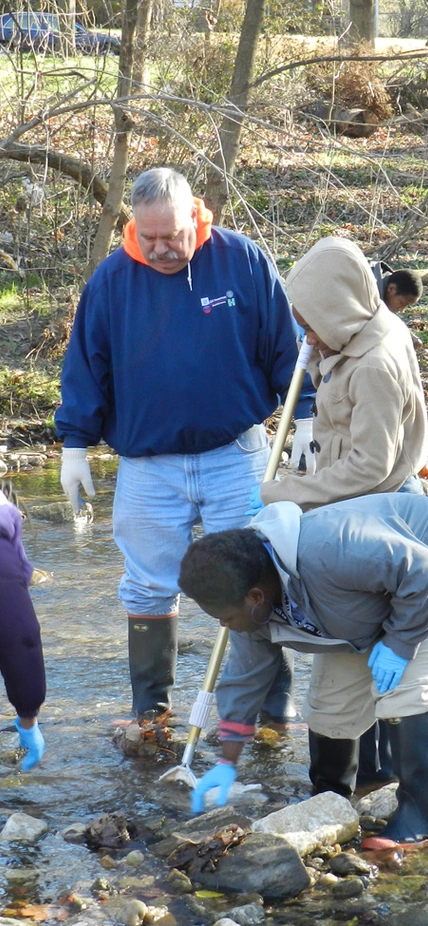Baltimore, MD—Carnegie’s educational outreach program, BioEYES, has joined forces with General Motors (GM), and Earth Force to take Walter P. Carter Elementary/Middle School students on a knee-deep watershed lesson on December 1, 2011. The group will monitor water quality, sample aquatic insects (indicators of stream health), go on a nature walk, and identify water problems in the Herring Run watershed near the school to teach students about science, the environment, and much more.
A component of the two-week watershed program is to have students raise zebrafish, a fish commonly used in scientific research, in water samples that the children collect on the field trip. Carnegie scientist and founder of BioEYES, Steven Farber, remarked “Kids take tremendous ownership of the zebrafish embryos that they raise in the classroom. When we have the students raise the embryos in water they collect on the field trip and find that they develop abnormally, they are upset. And what we try to do is capture that emotion and translate it into a long-lasting concern for their local environment and the Chesapeake Bay.”
Established at Carnegie in 2007, BioEYES fosters an interest in and a love for science in elementary, middle, and high school students. The BioEYES program Your Watershed, Your Back Yard was established in 2008 to teach students about local watersheds, pollution, and the Chesapeake Bay. The first two years the program conducted watershed lessons at 3 to 4 schools. In 2011-2012, they will be expanding their effort to nine schools.
During the program, science outreach educators from Carnegie spend two weeks teaching middle school students about local watersheds. They go on three field trips: one visits streams near their school to study the environment and conduct water-quality testing; a second, hosted by Blue Water Baltimore, teaches activities such as a planting, storm drain stenciling, or stream cleanup; and a third releases fingerling rainbow trout that are raised by students in class as part of a Trout in the Classroom program.
This year, the long-established GM/Earth Force partnership, GREEN, expanded their watershed education program into Baltimore with BioEYES at the helm.
BioEYES is a grassroots effort and the brainchild of molecular biologist Steven Farber at the Carnegie Institution’s Department of Embryology. It is a K-12 science education program. It provides outdoor and classroom-based learning through the use of live zebrafish. It incorporates teacher empowerment and provides professional development seminars and a co-teaching experience with trained university science consultants.
BioEYES is currently located at the University of Pennsylvania, the University of Notre Dame, and the Carnegie Institution for Science and Monash University in Melbourne, Australia. The program is entirely funded by grants and gifts. A complete list of sponsors can be found at the project’s website.
